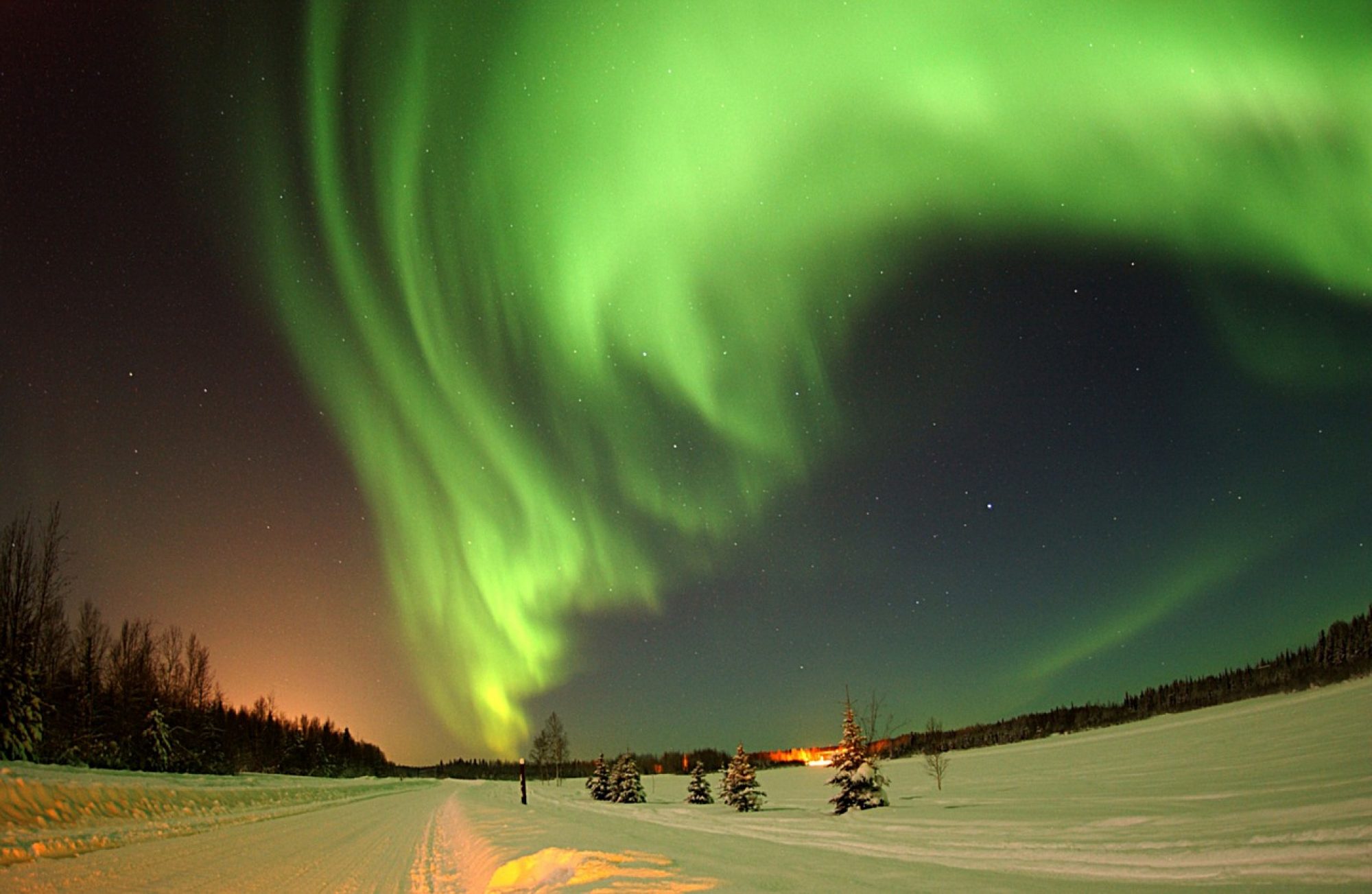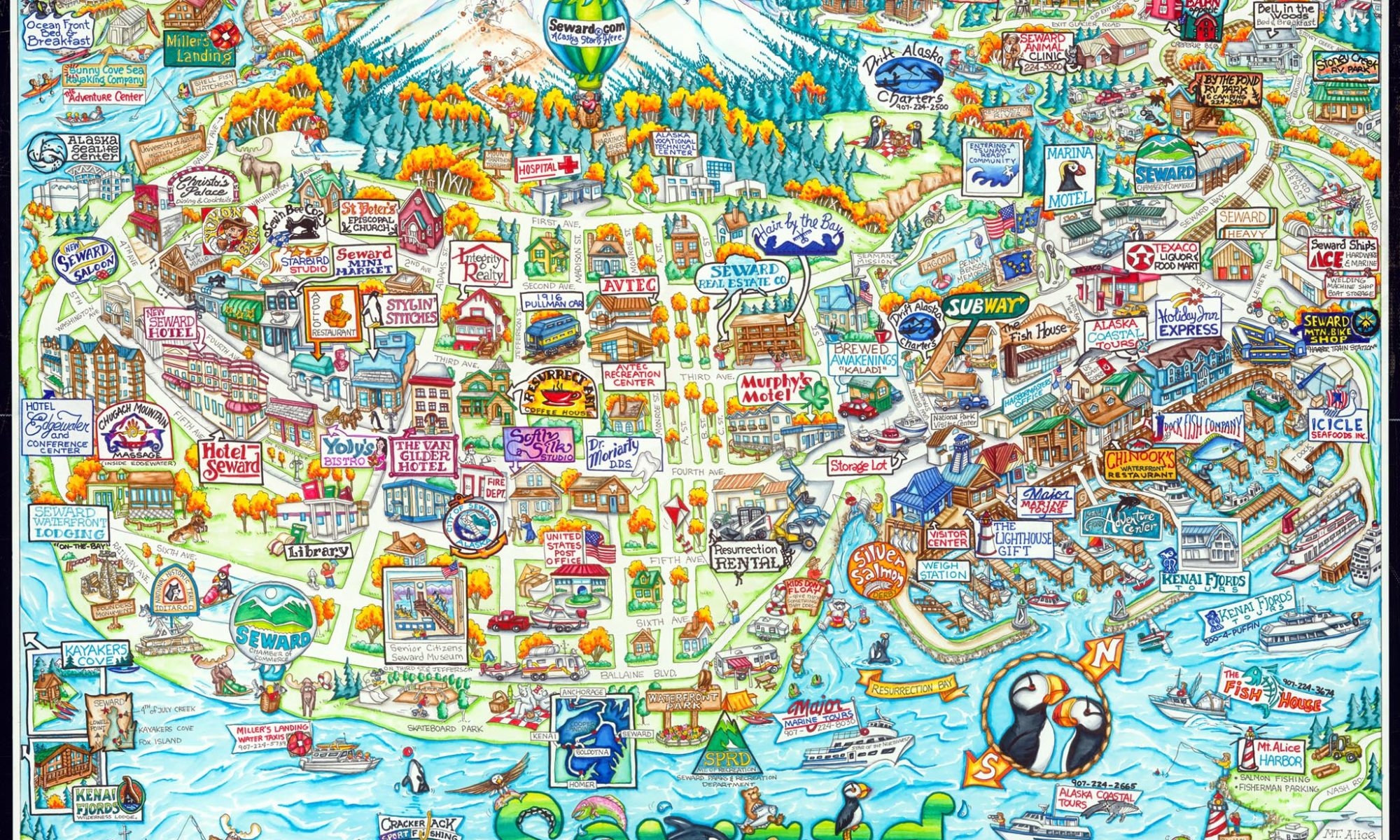I rarely travel the Cook Inlet in autumn. For Alaskans, it’s a time of putting away your fishing gear, your camping equipment, your yard tools and your lawn mower, and dusting off your snow blower. It means preparing the harvest and putting it away in the freezer or into jars. It means repairing roofs, fortifying sheds and changing over the tires on the automobile. Thoughts become more concentrated on the homes that had been neglected all summer in a season of endless daylight, warm temperatures and the urge to go out and enjoy the wilderness landscape.
When the Pace Slows
Seward in Autumn is a different sort of creature. During the summer, the town is bustling with activity. The streets are over-flowing with tourists, cooking smells tumble out from the restaurants, charter boats roar in and out of the bay.
The campgrounds in and around Seward are so full, they bulge out at the seams. Combat fishermen stand elbow to elbow, watching the passengers disembark from the cruise ships, hoping this did not mean more competitors. The savvy fisherman swings around to lesser known sides of the bay, looking for that elusive salmon hole that didn’t already have ten lines trying to feed from it.
In the autumn, the long rows of public campgrounds set up close to the docks and down the long water front, parallel with the town, are nearly empty. A few motor homes and trailers settle down in small clusters; there for one reason only; they love the beauty and tranquility of autumn in Seward.
High Energy Level
Seward, however, is not a sleepy town at any time of the year. As one of Alaska’s oldest towns, with some of the earliest histories, Seward has always had an industry in fishing, mining, trapping, farming and commerce. Autumn means a time of year when the young people give up their summer jobs in tourism and go back to their studies and after-school activities. It’s a time of year when the fishing crew begin spending more time at home and taking in the local entertainment. Live bands make their circuits of night clubs, taverns and music halls. Lounging around coffee shops and diners, you can hear the locals greet each others, tell jokes and fill each other in on the local gossip.
The docks also remain busy in autumn. The fishing boats continue to rock in their ports alongside the pier, while a cruise ship broods over its return home. Tug boats, cargo boats, sail boats and other assorted craft drift out into the bay our churn their way slowly back into port.
There is an added feel of friendliness. After all, if you’re visiting Seward in the autumn, you must not be a tourist, but a guest. You have a private look into a town that had reaped most of its yearly earnings in a few short months and is now settling down to the hard crunch of winter. They are making the most of their autumn.
The Shortest Season
Autumn is such a short season in Alaska. Within one month after the leaves turn yellow, the frost is crackling on the bowed brush and ice skims over the lakes, the ponds and the inevitable mud puddles. The first snow settles. The “termination dust” as the locals call is, is creeping down from the mountain tops, announcing daily the steady infiltration of winter.
Unless your sole desire is to take part in the salmon run, autumn is perhaps one of the most rewarding times to visit Seward. The black-green rain forest marches down from umber and rust coated hill tops and small mountain peaks. Behind them, the tall, craggy range cuts blue and white edges into the sky. The glaciers spill and retreat is recorded in the pockmarked ridges, silt filled basins slowly being overtaken with vegetation, and the chaotic surge of boulders, gravel and sand left behind.
The day is sparkling, although the wind is blustery. Only the more rugged of the sea-faring crowd set out to fish. Even without the salmon, Seward fishing is legendary among the Cook Inlet community. Despite choppy waters and a wind carrying the glacial bite of winter, these determined fishermen would bring back cod, halibut, rockfish and sea bass. Grills will light up and back yard cooks will experiment with their newest recipes. The real chill hasn’t hit yet, and just a few miles from the docks, the landscape is still sparkling gently under the cool but pleasant temperatures of autumn.
The Battle with the Artist
Autumn in Seward is an excellent time to visit Lowell Point. Just a few miles from the hub of Seward, on a gravel road swinging southwest of the Sea Life Center, Lowell Point is sheltered from all but the most insistent of Seward’s perpetual winds. The stilted houses face the azure aisle of small islands bumping their way out to the sea.
We have an encounter with an artiste. We both favor the view from a quaint house stacked sturdily on pillars with an even more quaint fishing boat resting next to it. He indicates with his expensive camera equipment that he needs this exact angle and sunlight to catch the paint peeling back from the boat and the roped life saver beside it. Our very presence is ruining his inspiration.
We drive around a few minutes to watch a family playing with their small children in a meadow, and a group of hikers urging each other up a mountain trail. When we come back to our beach entrance, the artist was still there, but two other vehicles had also arrived. A group of teenaged girls had shrugged past, intent on their own beach combing aspirations, as well as a retired couple, complete with their own cameras. The artist gives up, packs up his equipment, and returns to his car, but not without glaring back now and then at the intruders.
Kicking Back
Time grows incredibly lazy. Although we are all awake by nine a.m., we putter unhurriedly through breakfast, exchanging pots, pans and food stuffs between two campers, eventually compiling a feast of bacon, eggs, pancakes and stirred fruits. Three hours later, we are still chatting while listening to the vibration of the wind prying at the windows. It’s time to leave, and our footsteps are dragging.
Traveling in or out of Seward means going through a mountain pass. Although the Chugach is moderate by Alaskan mountain range standards, it still has its challenging moments. As you climb up into the softer, more rounded contours of the foothills, the jagged peaks of the more imposing mountains leap up in front of you. It is a world bathed in color as golden hills shift to brushed orange points above the timberline, and snow covered caps rear solidly in the distance. It is a world of thundering rivers and creeks, deep cut gullies and crystal clear lakes.
The highway is tame in autumn, its broad sides cutting a swath of yawning curves through carefully moderated elevations, but it’s a highway that could become suddenly hostile with the first winter storm or a torrential downpour. When autumn blesses it, the highway is dry, the bumper to bumper traffic that characterizes it in the summer, is gone. All that you’ll find is the occasional local on his way to one community or another, and a few motor homes still squeezing out a few last days of vacation before battening down for the winter.
There is no season quite so short as the golden days of autumn in Alaska. Often times, the fall season is accompanied by long, drizzling rains that turn into snow as the weather becomes colder. But when Alaska blesses its residents with a dry autumn, there are few trips as satisfying as traveling the Tournagain Arm and arriving a few hours later in the town of Seward. The scenery is spectacular, with clear views of the wildlife. The bears have begun their migration to their winter homes, but the moose continue to occupy the surrounding brush, foxes sling among the trees and an occasional porcupine ambles along close to the road.
It is the perfect season for those who crave the solitude of wilderness spaces and the warm companionship of friends warming their feet in front of a fire, drinking hot beverages and recounting their adventures. It is the perfect time to feel the communion of a society that had worked hard and played harder all summer and was now ready to rest and prepare for winter activities. With the busy industry of tourism stripped away, Seward is revealed in its full splendor; a quaint little town with a vigorous people building their lives around the history of their past, the modern influences of their present and their hopes for the future.

